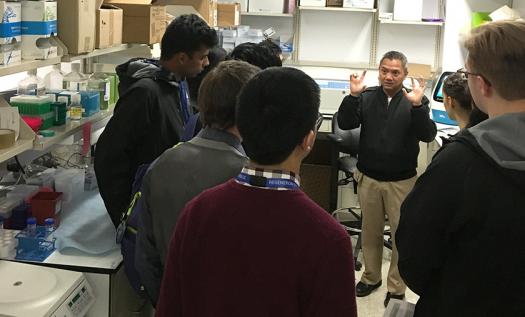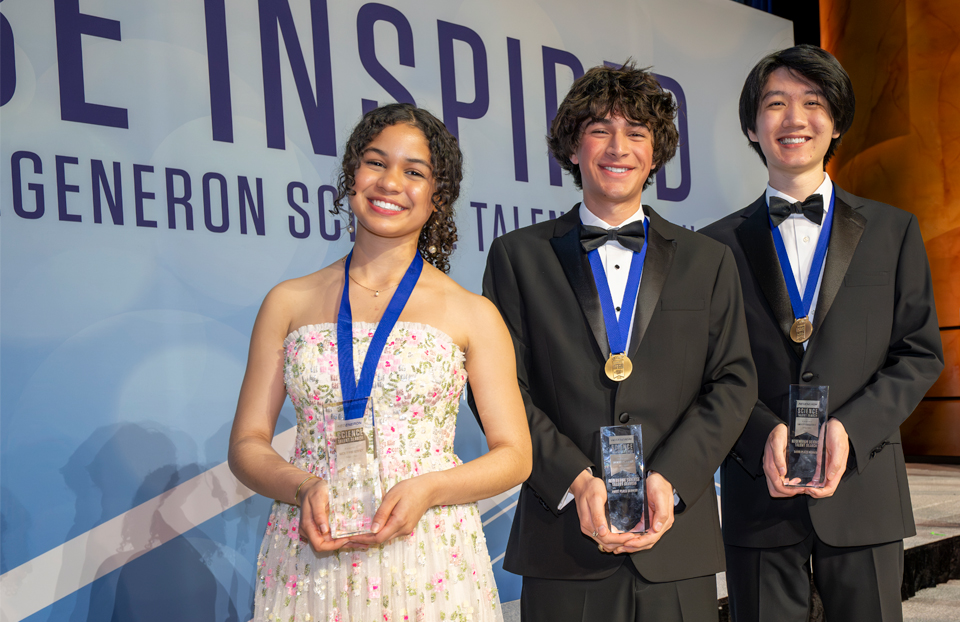NIH inundated with future science leaders

As part of the Regeneron STS finalist week, students take part in a variety of exciting activities. This year they had the opportunity to tour the headquarters of the National Institutes of Health in Bethesda, MD.
The trip began with a talk by Erika L. Barr, Director at the NIH Office of Intramural Training and Education. She gave the students a tailored snapshot of the opportunities and various programs that are most relevant to their ambitions and timeline.
“For those of you interested in computational research or computer science, we have projects here that may interest you. Or you may want to do clinical research but in addition to doing research, you need to make sure you are developing holistically–not just scientifically, but also developing personally and professionally,” Erika said.
“Why should I spend the summer at NIH?” one of the finalists asked.
Erika responded, “The thing is, here, you are getting the mentoring, personal development, and holistic NIH environment. We offer other opportunities to develop.”

The students also had the opportunity to visit four NIH labs, including the lab of Learoy Saligan, a scientist at the National Institute of Nursing Research investigating chronic fatigue experienced by cancer patients after receiving chemotherapy and other cancer treatments.
Principle Deputy Director at the NIH, Lawrence Tabak also met with the students, laughingly explaining that the chaperones would not let them leave until they became interested in biomedical research. Lawrence shared that biomedical research is multidisciplinary, explaining that in the era of big data students interested in mathematics and computation have a role in NIH and biomedicine. The research at NIH applies to a variety of sciences, including economics, he noted.
When asked what made NIH different, Lawrence explained that at the NIH researchers conduct research first, instead of relying on grants. There are advantages and disadvantages to each system, but because the NIH intramural program encourages collaboration, scientists follow their true interests and work with peers on some of the most challenging questions in science and medicine.
Observing the state-of-the-art lab facilities and learning about research activities conducted by NIH scientists, it may be sooner rather than later we see some of these finalists on this campus. The trip was especially informative for students interested in pursuing a research career, but may have even enlightened students currently interested in unrelated fields.


